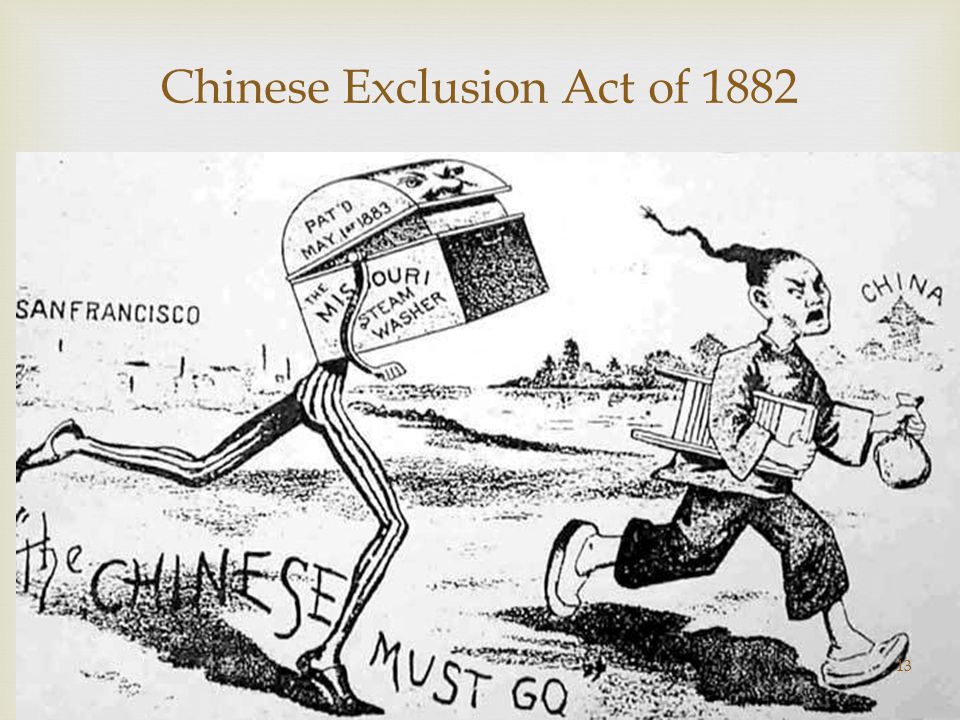
By Dr. Raymond Douglas Chong (Zhang Weiming)
After the California Gold Rush, during the 1850s and 1860s, the Chinese of Sye Yup region were mostly welcomed in America as much needed physical labor in the Wild West of America. However, the tide turned with the economic depression of the 1870s, which left many White Americans blaming the Chinese for taking away American jobs. California labor unions and newspapers incited an anti-Chinese movement that spread through the country and made its way to Congress.
On May 6,1882, Congress passed the first Chinese Exclusion Act and President Chester Arthur signed it- the first federal law in America that restricted immigration based on nationality or race. Canada and Australia passed similar discrimination acts to stop Chinese laborers entering their territories. Congress finally repealed it and subsequent amendments in 1943 with the passage of the Magnuson Act, otherwise known as the Chinese Exclusion Repeal Act of 1943.
The Great San Francisco Earthquake in 1906 destroyed immigrant records. Its destruction allowed the beginning of the “paper son” scheme to circumvent the ugly Chinese exclusion. With the destruction of immigration records, Chinese could claim citizenship status. They obtained new citizenship papers, with the derivative right to pass on citizenship rights to their children. The “paper sons” of American citizens had the right to immigrate to the United States. The “paper son” papers were given to a relative or sold.

At the age of nine years, Gim left for America and said a bittersweet farewell to Cun Chuen Wong, his mother, and Suey Fong Chong, his stepsister. Gim walked to Baksa and took a train and a ferryboat to Hong Kong for his epic journey to Gum Saan – Gold Mountain (America). He stayed in Hong Kong for ten days in March 1932, at Man Yuen Lung Company on 95 Winglock Street.
As a sojourner, he departed on March 25, 1932 from Hong Kong, China, on the R.M.S. Empress of Asia, a Canadian Pacific Steamships steamer. In the steerage class, he was accompanied by Quock Hung Chung, his “paper father.” Mee Fong Gee, a “family friend,” also joined them on the ocean journey.

Gim’s “paper father” was actually his uncle and already had citizenship in the United States. He submitted an affidavit to United States Immigration Service – Chinese Division in Boston. Quock was a restaurant cook, living in Boston Chinatown.
Gim, Quock and Mee journeyed aboard the Empress of Asia. One of The White Empresses of the Pacific, the Empress of Asia was 16,090 tons, went at a speed of 19 knots and carried 1,118 passengers. Gim, Quock and Mee saw the great seaports of Shanghai (on March 28), Nagasaki (on March 29), Kobe (on March 31), and Yokohama (on April 2). Then they went on to Victoria on Vancouver Island. The Canadian Pacific Steamships (“World’s Greatest Travel System”) fleet was known as the largest and fastest liners on the Pacific Ocean to and from the Orient. They had white hulls with blue ribbons and with huge buff funnels as they plied the Oriental waters on their trans-Pacific runs.
After 19 days of ocean travel, he arrived at the Port of Vancouver on the Pacific Coast on April 13, 1932. He took the CPR “Imperial Limited” No. 2 train from Vancouver to Montreal, Quebec, in four days or about 100 hours. The locomotive carried coaches and sleepers. During his journey of 2,881 miles on the “Imperial Limited” transcontinental service, he saw the towering Canadian Rocky Mountains and sweeping prairies. From Montreal, he took the CPR train to CPR Saint John Station in New Brunswick. The Canadian Pacific S.S. Princess Helene, a Bay of Fundy ship, as a ferry, took him across to CPR Digby Station in Nova Scotia, to the destination of the old Dominion Atlantic Railway Yarmouth Station.
From the Port of Yarmouth on the Atlantic Coast, he departed on April 19, 1932 on S.S. Yarmouth to the Port of Boston. The next day, on April 20, 1932, he arrived in awe of the Boston skyline. On the Port of Boston waterfront, he touched the golden soil of Gum Saan, after 26 days of ocean and train travel. He was held in the detention at the East Boston Immigration Station, 287 Marginal Street, under United States Department of Labor. It functioned as a detention center to examine all immigrants at the Boston port of entry to allow them to legally enter the country.
James E. Fitzgerald, an inspector, along with an interpreter, intensively interviewed Gim for admission, for four days during an official hearing. He was questioned about his family ties and the farm village of Yung Lew Gong. Quock Hung Chung and Gee Mee Fong testified as witnesses.

On April 25, 1932, the officials admitted Gim Suey Chong, as son of Hung Quock Chong, American citizen, and issued the prized Certificate of Identity No. 66116. Afterwards, he walked the ramp – “golden bridge” to legally enter Gum Saan, with Quock Hung Chung. He excitedly met Moi Chung, his father, after nine years of separation.
Gim, “paper son,” never returned to China. Under the ugly shadow of the Chinese Exclusion Act, he never acknowledged his illegal immigration status. Gim Suey Chong died on December 2, 1979, in Los Angeles, California.
For more about ancestral history of Raymond Douglas Chong, please review Zhang Clan Odyssey family website, its chronicles and ancestral line: http://orq.mychinaroots.com/report/raymonddouglaschong
AsAmNews has Asian America in its heart. We’re an all-volunteer effort of dedicated staff and interns. Check out our new Instagram account. Go to our Twitter feed and Facebook page for more content. Please consider interning, joining our staff or submitting a story



